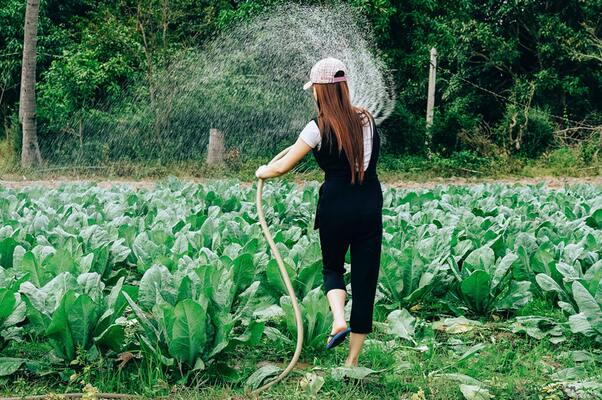
Rules on how often you should water trees in different climates vary, but there are some general guidelines that you can follow to ensure that your trees remain healthy and strong.
First, consider the climate where you live. Trees in very hot, dry climates will need water more frequently than those in cool, humid ones. Climate aside, though, the general rule of thumb when it comes to watering trees is this: keep them well-watered but not soggy wet.
Use these three tips below to make sure your trees are watered properly and don’t suffer any unnecessary damage or health issues due to lack of water.
If you live in a hot, dry climate
Watering a tree too much is worse than not watering it enough. When a tree is constantly stressed, its immune system suffers and it becomes even more vulnerable to bugs and disease.
A good rule of thumb is to water every other day or only during dry spells (every three days or so), especially if your area doesn't see much rain over an extended period of time.
It's also important that you water at regular times, as an irregular schedule can stress a tree out even more. Water deeply for healthy growth: To make sure your tree stays healthy, aim to soak its root zone, which usually ranges from one-half to one foot below ground level.
You can use a hose or stand beneath your tree with a watering can, but some experts recommend installing an irrigation system with either plastic sprinklers or emitters.
Have someone help: Even something as simple as watering your tree requires two people – someone to hold the hose and another person to watch for problems like falling limbs, broken roots, and pests (such as squirrels).
Water early: If possible, water before 8 am -- especially if you live in a warm climate.
If you live in a cold, wet climate
Trees should be watered once a week during dry spells. A good rule of thumb is to water your tree when it’s needed rather than sticking to a set schedule. If your tree is exposed to cold, wet conditions, it will need more frequent watering; if it’s planted in hot and dry conditions, less frequently.
Check for browning leaves and gauge your watering needs by whether or not the soil is moist at its base, which will depend upon the type of soil used for planting. In general, outdoor plants require about 1 inch of water per week (or 2 inches during heat waves).
Use soaker hoses instead of sprinklers or misters because they allow water to soak into the ground instead of evaporating off into thin air. Alternatively, use drip irrigation to place water directly next to plant roots.
Plants that don’t get enough water can display many signs: from yellowing and wilting leaves (the most common) to very few new buds, branches falling off prematurely, or no flowers appearing at all. Water regularly as soon as you detect any of these issues!
This may mean watering twice a day during extreme heat spikes – especially in container-grown trees - but better safe than sorry!
If you live somewhere in between
If you’re not sure whether or not to water, use a soil moisture meter to check if your tree is suffering from drought. If it measures that roots are sitting in wet soil and doesn’t measure any dry soil, then it’s probably fine for now.
Watering again too soon can be harmful to plants because they can get waterlogged. After each watering, wait a few days before doing it again just to make sure there isn’t another problem developing. When in doubt, ask an expert!
You might also want to hire someone to do it if you don’t have time. Remember: Tree health depends heavily on regular watering, so don’t skimp out at all. It could mean death for your treasured garden addition!
But even without a seemingly obvious reason like the possibility of root rot, never hesitate to water! Soil needs air as well as water to breathe properly.
The plant breathes in oxygen during photosynthesis—the process where plants take light energy and turn it into stored chemical energy—and releases carbon dioxide into the air when it breaks down sugars (which explains why leaves change color).
Without these two gases interacting properly with one another inside your soil, growth will halt. As long as what you’re using to water with doesn’t run off quickly without allowing everything time to soak up some much-needed moisture first, go ahead and water whenever you need to.
Just remember that rain counts toward watering duties, too. Sure, you know it won’t hurt anything to skip watering every once in a while if things look okay.
But remember: A little goes a long way. Plan around rain showers by sticking to your schedule as much as possible so your trees stay healthy and green year-round.
1. Register your company
2. Create a searchable listing
3. Connect with more clients
